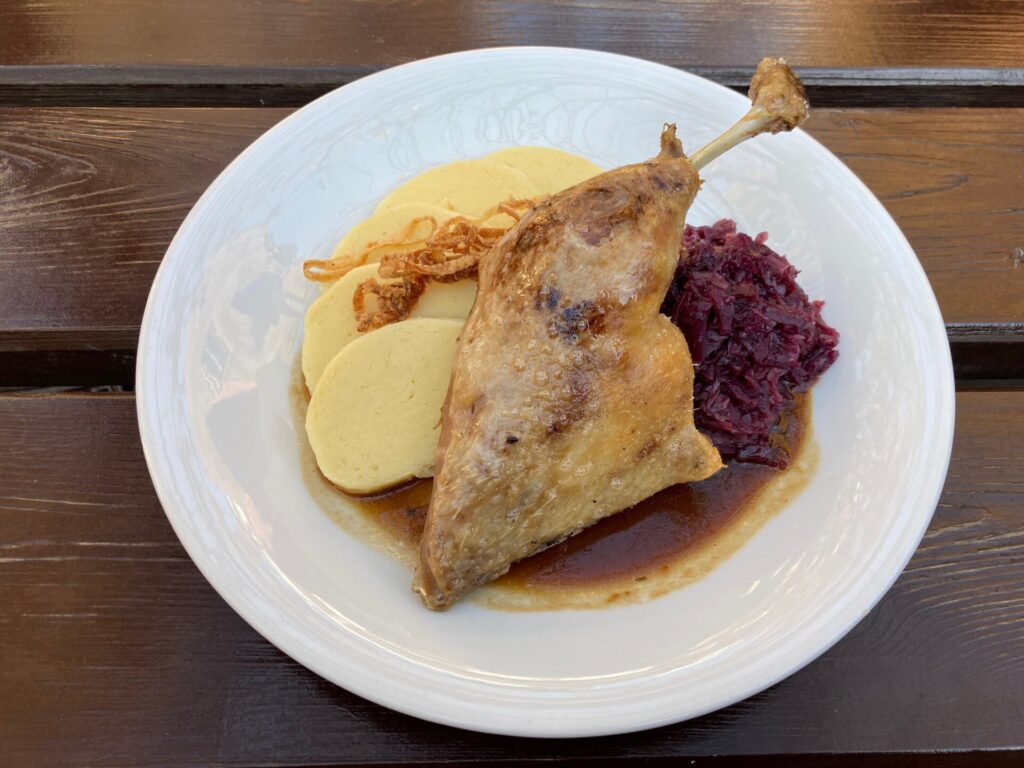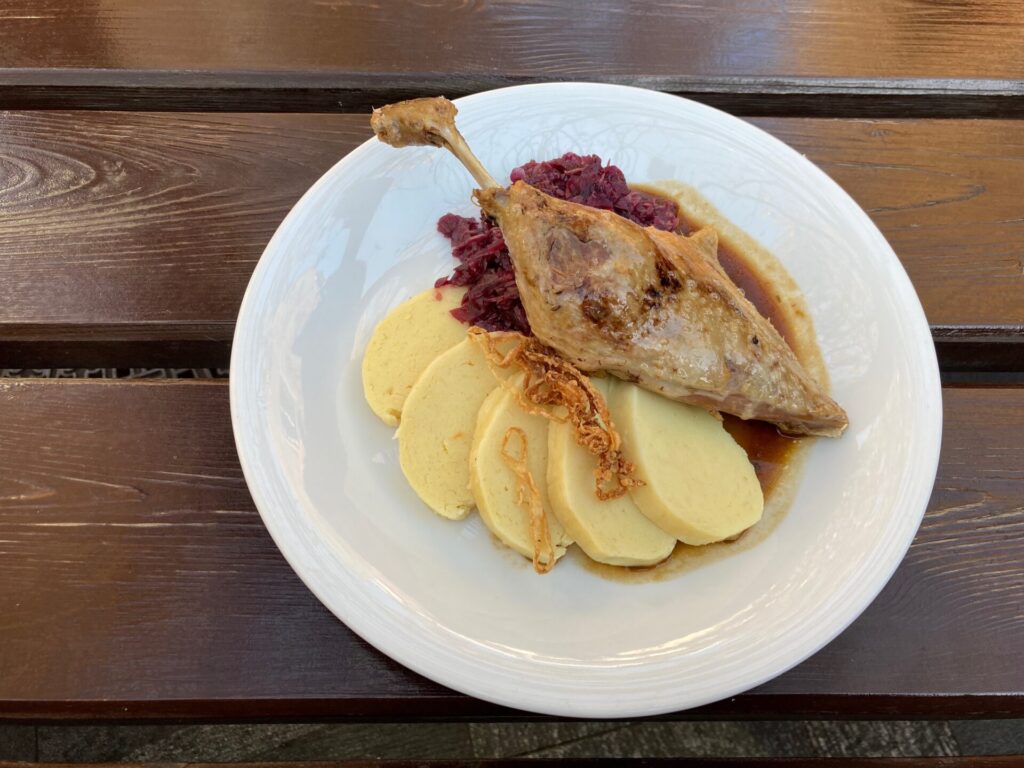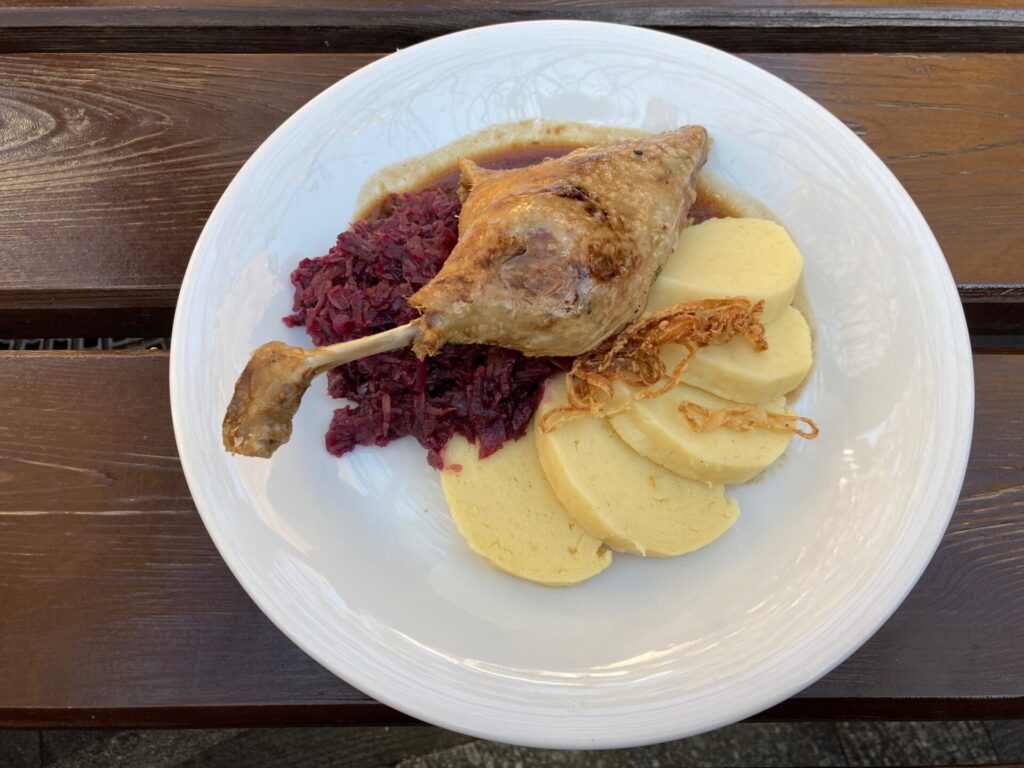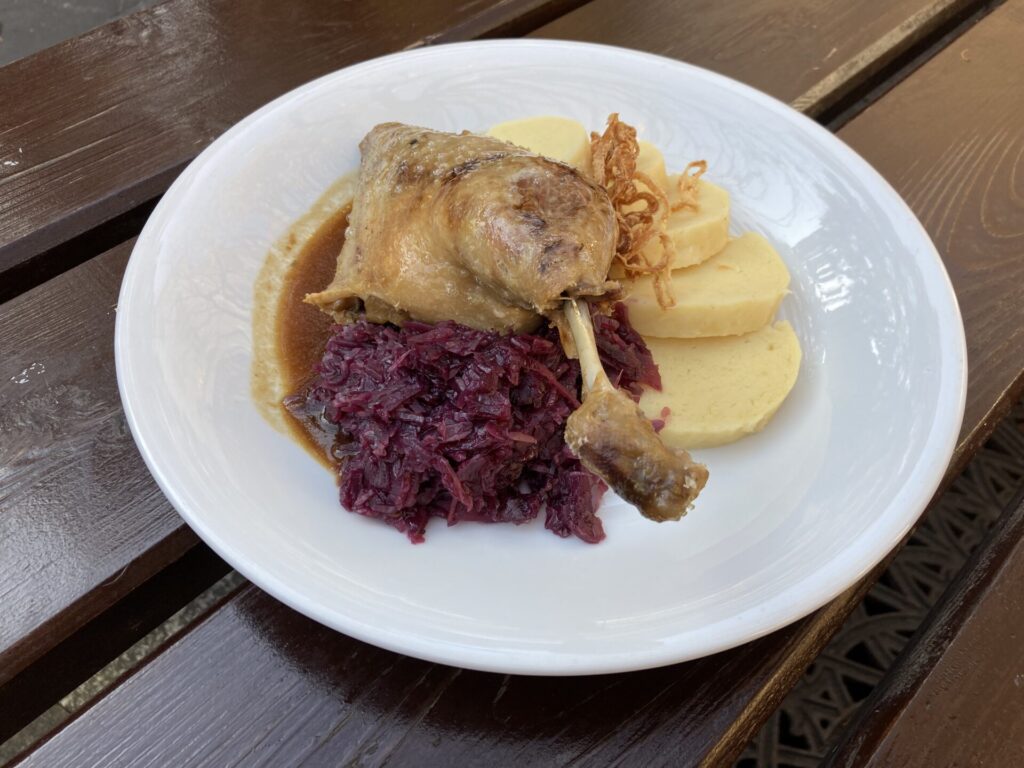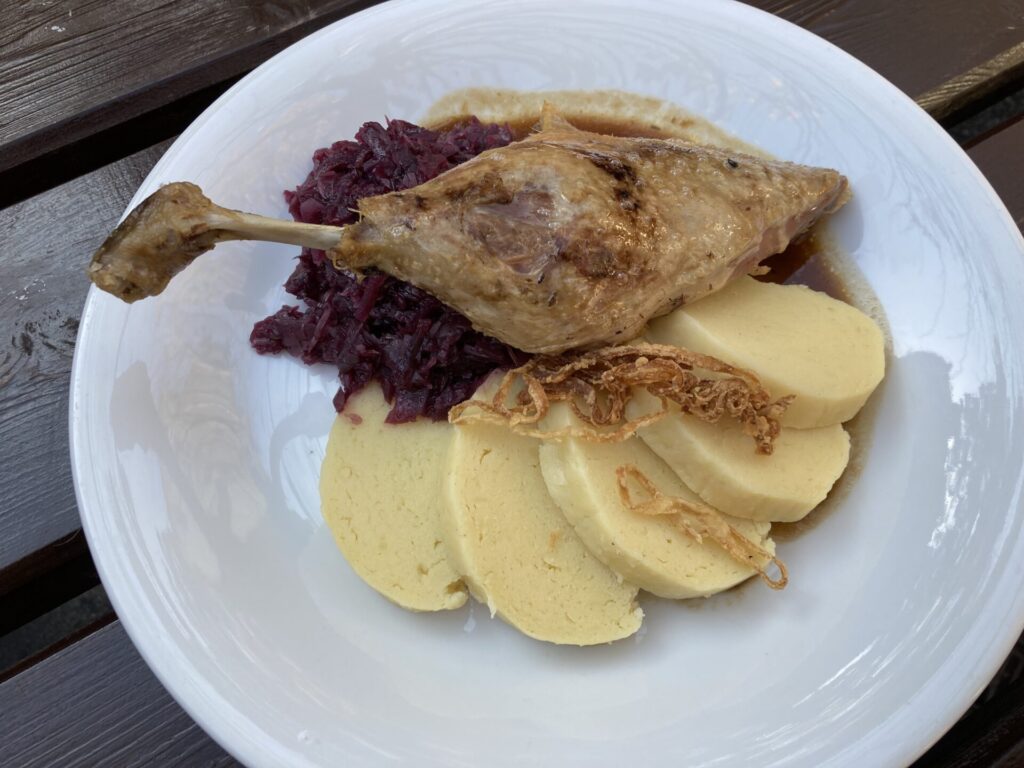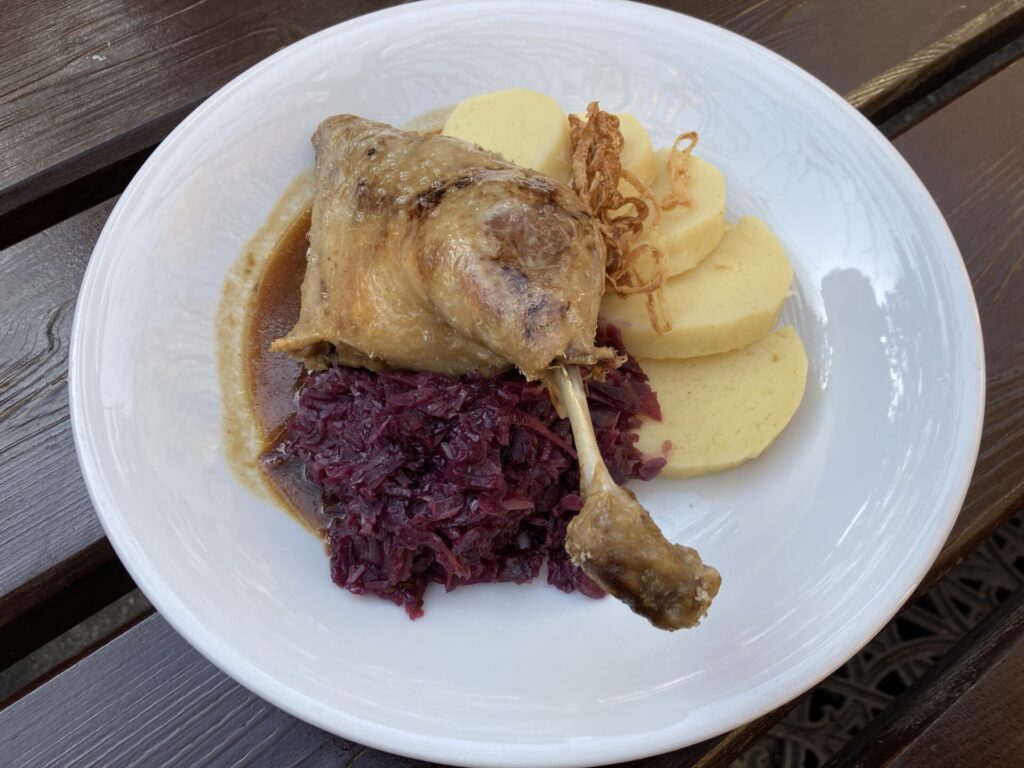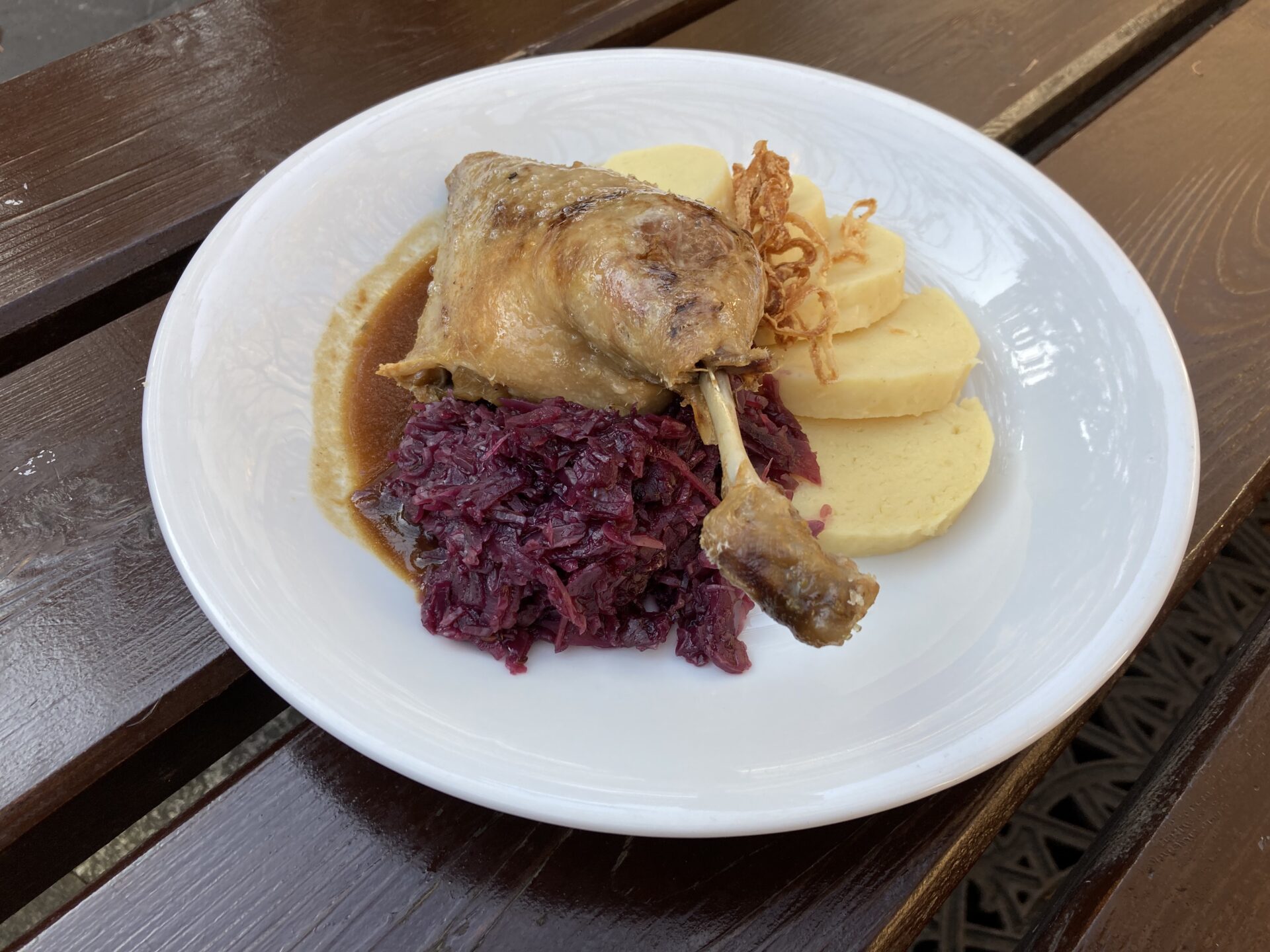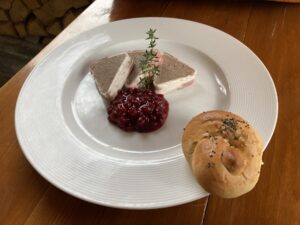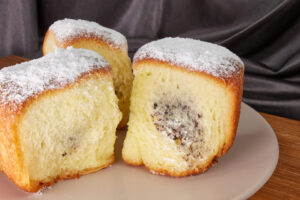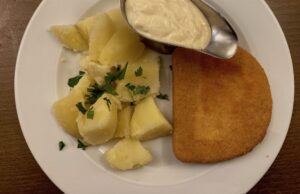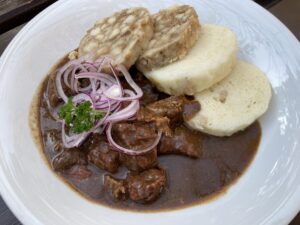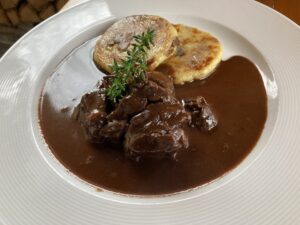U Fleků / 10 Servings
Ingredients
10 duck thighs
duck or goose fat or sunflower oil
salt
caraway seeds
1. Dip the duck in the oil so it does not stick out and confit in the oven at 85 degrees Celsius for 5-6 hours until tender. When confitting, leave the pot open, do not cover it.
2. A confit thigh doesn’t look very nice. It is only by baking that we create a crispy crust. After confitting, remove the meat and use the fat for further confitting, as it will last a long time. Salt the meat, add some caraway seeds, and bake in the oven at 180 degrees for 10-15 minutes to form a crust.
Red cabbage
(10 servings)
2 large white onions
1-1.5 kg of plain flour
2 kg pickled cabbage
500-700 g sugar, to taste
salt
vinegar
1. Saute the onion in oil, put the pickled red cabbage on it, cover it with a bit of water, and cook for about 20 minutes until the cabbage is tender.
2. Make a roux of plain flour and white onion: cut the onion into small cubes, and fry it in oil until pink. Add the plain flour and thicken the red cabbage with the resulting roux.
3. Season the cabbage with sugar and salt.
Potato Dumplings
(10 servings)
2 kg of potatoes
1-1.5 kg of baby semolina
1 small handful of salt
5 eggs
1. Boil the potatoes with skin until semi-soft. The cooking time depends on the type of potatoes; it is approximately 30-40 minutes. The potatoes must only be cooked until extremely soft, otherwise the dumplings would quickly run out. Peel the skin off the boiled potatoes, and leave them to cool.
2. Grate the potatoes on a coarse grater; add an egg and baby semolina. Salt to taste. Mix everything well.
3. Roll out the dough into rolls, roughly 900 g heavy.
4. Cook in water or a steam oven for 45-55 minutes.
5. Cut the freshly cooked dumplings with a thread. Cool dumplings are better cut with a knife.
Gravy – demi-glace
(10 servings)
2 kg of veal bones
1.5 kg of carrots
1.5 kg of celery
1.5 kg of parsley root
4 tablespoons of tomato paste
fat for frying vegetables
Spices:
bay leaf
allspice
whole black peppercorns
1. Roast the veal bones in the oven at 250 degrees Celsius for 20-30 minutes to sear.
2. Cut the vegetables into more giant cubes and sauté them in a pan; add tomato paste.
3. Add the mixture from the pan to the bones and cook for a few more minutes to bring out the color, which is the main flavor component of the broth.
4. Transfer everything to a pot, pour the beef broth, and slow cook for three days. No, that’s not really a typo – because veal bones are used, which have a lot of joints, after three days of cooking, the mass due to the high collagen content in the bones jellifies.
5. Strain the mass through a thick cloth and pour it onto low baking trays, where the matter solidifies.
6. For further use, cut out cubes from the gravy sheets and place them on the pan; you can pour a little broth over them.
Chef Zdeněk Turšner’s recommendations
- Confiting is slow cooking in its gravy, in fat. Duck fat or goose fat is mainly chosen. Since it is expensive, sunflower oil can also be used.
- The fat heats up slowly, and the meat gradually becomes tender. This method of preparing meat is better than traditional roasting, which is simpler but makes the meat drier. During confit, the meat remains juicy.
- It is essential to check the tenderness of the meat. It is not said that the confit is finished after a predicted time, but roughly between 6 or 10 hours. When we poke the meat with a fork and pull it out, it must not “hold” the meat. The finished meat must fall off the fork.
- Some people add vinegar to the cabbage to enhance its taste; some add apples and grated horseradish.
- Coarse flour is commonly used in potato dumpling recipes. I use baby semolina because using coarse flour makes the dumplings tougher. If you use baby semolina, the dumpling is fluffier.
- You can also use baking powder; the dumplings are more leavened.
- Dumpling cones can also be smaller; some make little logs or gnocchi from the potato dough. The smaller the dumpling, the shorter the cooking time, of course.
- Demi-glace cannot be substituted. It is unique, has a robust and distinctive taste, and is meaty; nothing can imitate it. Moreover, it is one of the best sauces. This process for demi-glace is laborious and expensive, but it is the most appropriate for our restaurant.
- Demi-glace cannot be replaced or imitated, but if someone doesn’t want to take so long to prepare it, they can make a simple sauce similar to demi-glace: put the rendered fat from the pork or duck in a pan, fry until very dark in color, dust with plain flour and pour in with the broth.
